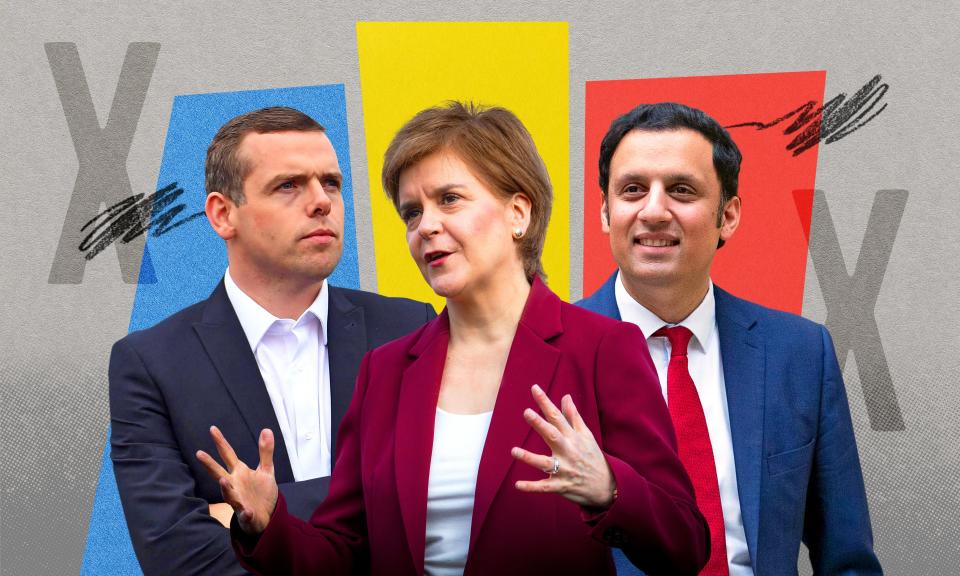Scottish election 2021: a visual guide on what to expect

The Scottish parliamentary elections will take place on 6 May to elect 129 MSPs to Holyrood.
The results will determine whether Nicola Sturgeon and the Scottish National party (SNP) can secure a majority in favour of a second Scottish independence referendum.
At the SNP’s manifesto launch on Thursday, Sturgeon said: “If there is a simple, democratic majority in the Scottish parliament for an independence referendum, there will be no democratic, electoral or moral justification whatsoever for Boris Johnson or anyone else to block the right of people in Scotland to decide their own future.”
In 2016 the SNP fell two seats short of a majority, with 63 seats in total. At the parliament’s dissolution it will be defending 61 of these. The Labour party dropped to third place for the first time after a large increase in support for the Conservatives.
The independence-supporting Scottish Greens won six seats in 2016, and have given their support to the SNP on budget bills and constitutional matters – in this election they are predicted to double their seats.
Sturgeon’s SNP still dominates the electoral map, with Conservatives holding seats along the English border and Labour holding some seats in the central belt.
Polling shows healthy SNP lead
The polling in Scotland is looking promising for Sturgeon, with a healthy lead for the SNP. The latest 10-poll average puts the party on 49.4%, well ahead of the second-placed Tories on 21.7%.
This lead has narrowed in recent months, with the Salmond crisis making SNP splits public, but still makes an SNP majority a reasonable outcome of the election.
Salmond targets Scottish voting system
In late March, Alex Salmond launched his newly formed Alba party, claiming he could help secure a “super-majority” for independence at Holyrood, which would significantly weaken Westminster’s stance in refusing a second referendum.
Alba, which is only standing candidates on the regional list, argues that it could augment the pro-independence vote by scooping up “wasted” SNP votes.
Under Scotland’s voting system – the additional member system (AMS) – there are 73 constituencies, and the candidate with the most votes in each seat wins. This is similar to the Westminster system, which leads to an inconsistency between the number of seats won and the number of votes cast.
Scottish voters also get to cast an additional ballot, in which they vote for a party. These votes are then counted in eight regions, and seats are allocated within those regions to top up the constituency totals in order to make the regional representation more representative of the party vote share.
Because of this, parties that win a lot of constituency seats tend not to win as many additional regional seats, as the regional lists aim to make the overall result better reflect the national vote. In 2016, 59 of the SNP’s 63 seats were constituency seats.
Salmond’s Alba party plans to stand candidates only in the regional ballot, arguing that previously wasted SNP votes in the regional ballot will count for another party with the same goal: an independent Scotland. But the Scottish system is notoriously difficult to predict and the pro-independence Scottish Greens are polling far more strongly than Alba.
Elections will also take place on the same day to elect the Welsh parliament and London assembly, as well as for 143 councils, 13 mayors and 39 police and crime commissioners in England.
• This article was amended on 15 April 2021. Scotland is holding parliamentary elections, not local ones as the original headline suggested. The Welsh elections are also for the parliament, which is no longer called an assembly.

 Yahoo Movies
Yahoo Movies 